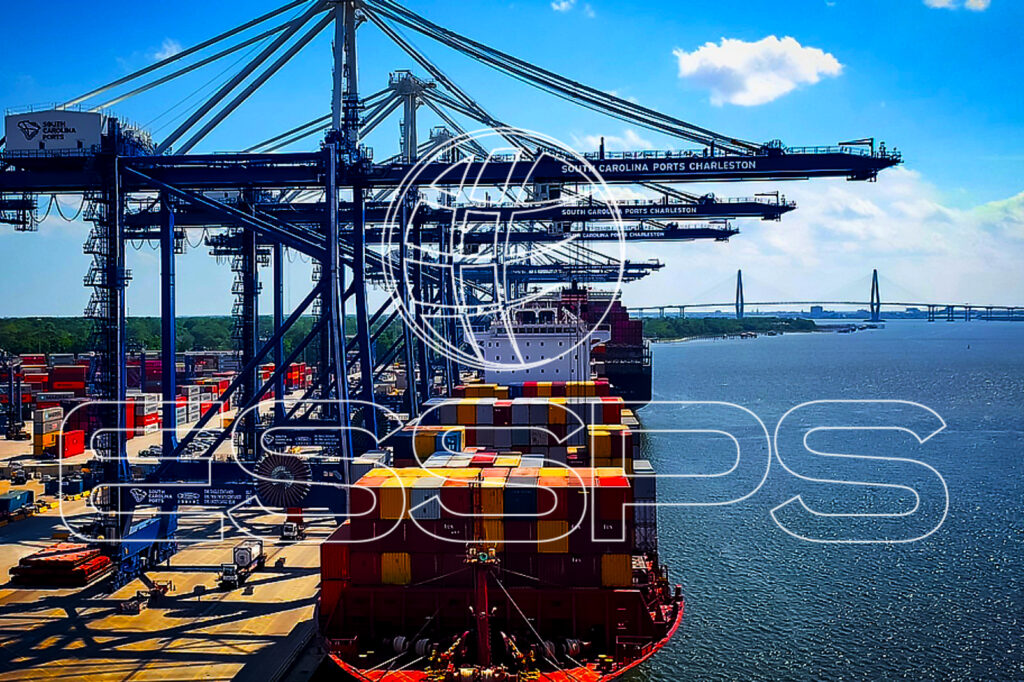Cargo lashing and securing
Cargo lashing and securing is the process of securing the cargo for transportation, using different methods to ensure that the cargo is safely transported by sea, air or land, prevent damage of the cargo by minimizing the un-desired movements and to ensure a safe journey to its final destination.
The lashing process focuses on securing the cargo within the storage area (Container), while securing process focuses on fastening the cargo to the transportation vehicle or vessel such as a ship or a truck.

Why cargo lashing and securing is important?
Cargo lashing and securing is an important part of logistics and transportation, as it ensures the safety of both the cargo and the people handling it. It can reduce the risk of damage or loss to their cargo, and ensure that it arrives at its destination safely and securely. Also it provides the following benefits:
1. Prevent cargo shifting during transportation.
2. Minimize the risk of damage to the cargo.
3. Safety for workers and others involved in transportation.
4. Compliance with regulations and industry standards.
5. Protection of the transportation vessel or vehicle.
6. Avoid Delays and additional costs that may be caused by damage; such as insurance claims and replacement expenses.
Methods of lashing and securing:
There are several methods that can be used in cargo lashing and securing. The choice of the appropriate method depends on many factors such as; the type of cargo, weight, shape, mode of transport, and transportation conditions. Some common methods include:
1. Webbing Straps:
Strong, flexible straps including composite strapping, steel strapping, and polyester strapping woven polyester, nylon, or other synthetic materials. They are used to secure cargo to pallets or within containers.
2. Chains and Binders:
Heavy-duty chains and binders are used to secure large and heavy cargo items. Binders are tensioning devices that help tighten the chains around the cargo.
3. Dunnage Bags:
Inflatable bags placed in the void spaces between cargo items to prevent movement and shifting during transportation.
4. Twist Locks and Lashing Bars:
These are used in containerized shipping to secure cargo within containers. Twist locks lock containers onto the ship’s deck preventing them from shifting during transportation, while lashing bars are used to secure cargo inside the containers.
5. Wire Rope and Turnbuckles:
Wire ropes are used for heavy-duty lashing, and turnbuckles are used to adjust the tension in the wire ropes.
6. Friction Mats and Anti-Slip Mats:
Mats are placed under cargo items to prevent sliding and movement during transit.
7. Edge Protectors:
These are used to protect cargo edges from damage caused by lashings and securing devices.
Our service :
We provide high-quality cargo lashing and securing services, ensuring the safety of your goods during transportation by land, sea, or air. Our experienced team uses premium materials and equipment to handle diverse types of cargo effectively.
You can rely on our reliable and efficient lashing and securing services to protect your cargo.
Points WE take into consideration while securing your cargo:
· Choose the appropriate method and securing materials depending on the type of cargo, weight, shape and transportation conditions.
· Take into consideration the surrounding environmental conditions such as moisture, humidity and corrosion and weather conditions.
· The weight of the cargo must be evenly distributed; this will ensure the cargo stability and prevent it from moving.
· Maintain equal tension and make sure tension is evenly distributed, do not over tighten the cargo or make it loose.
· Check regularly the condition of the lashings during the passage.
· Pay attention to potential sliding or tripping hazards
